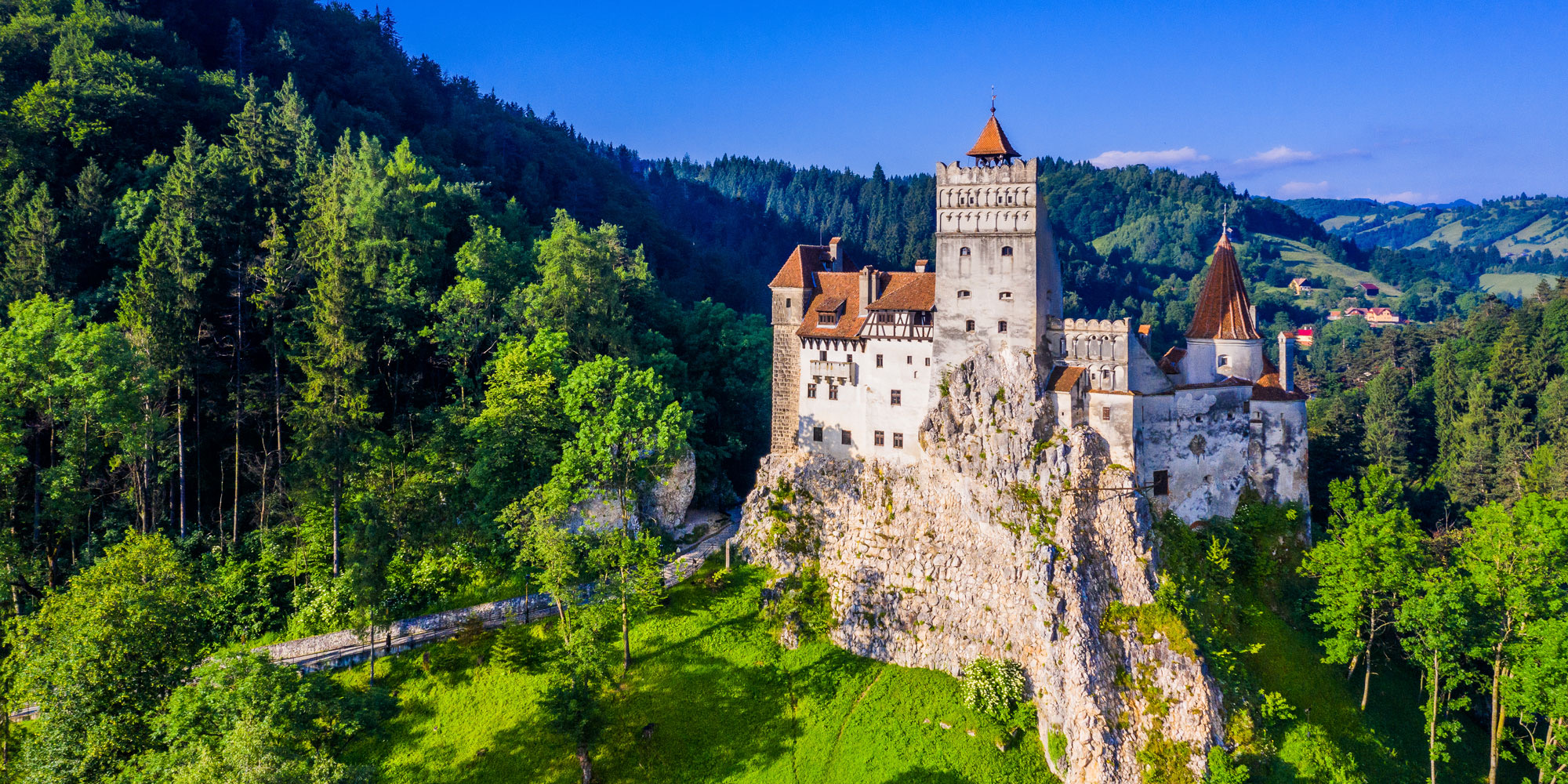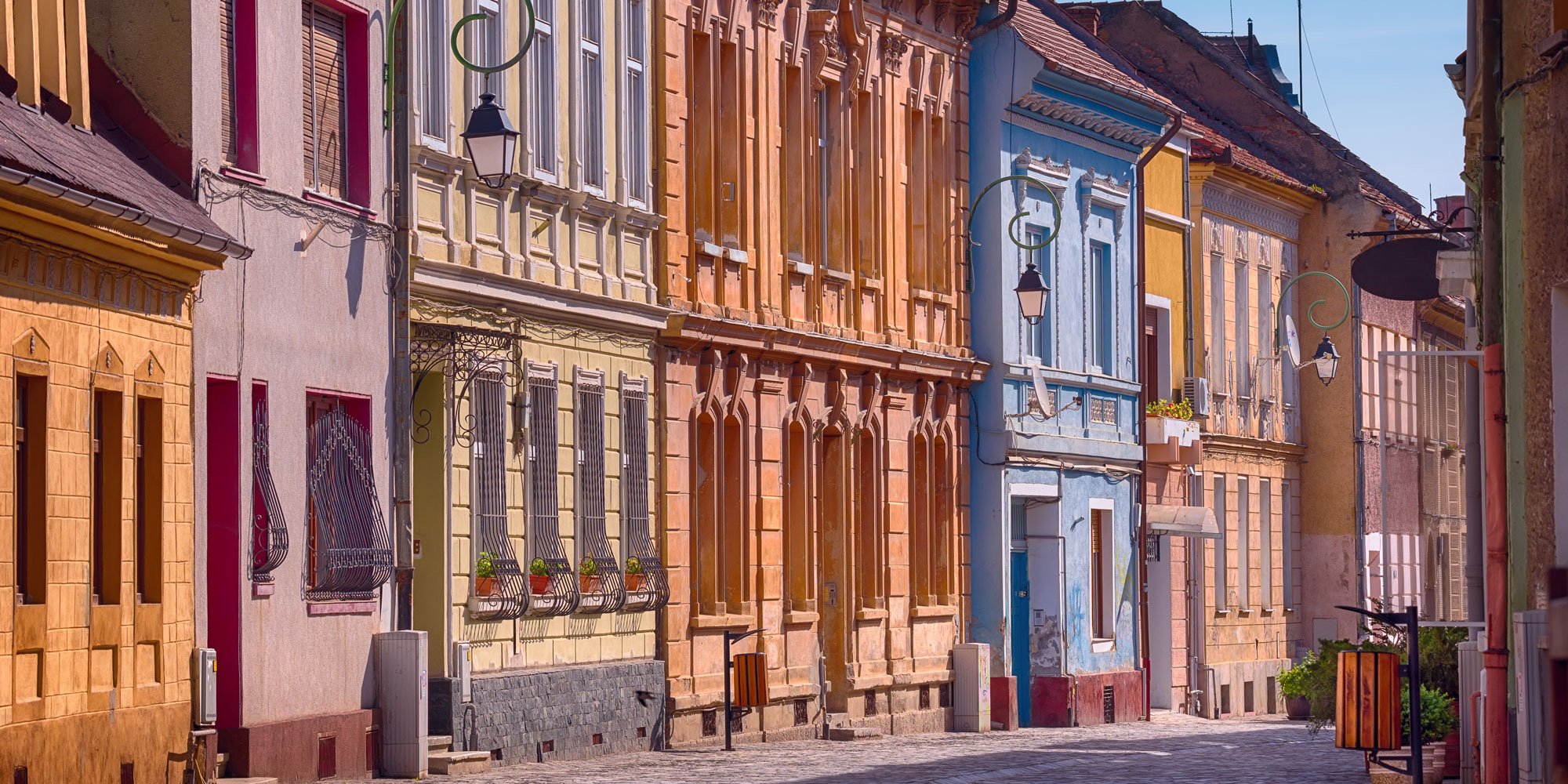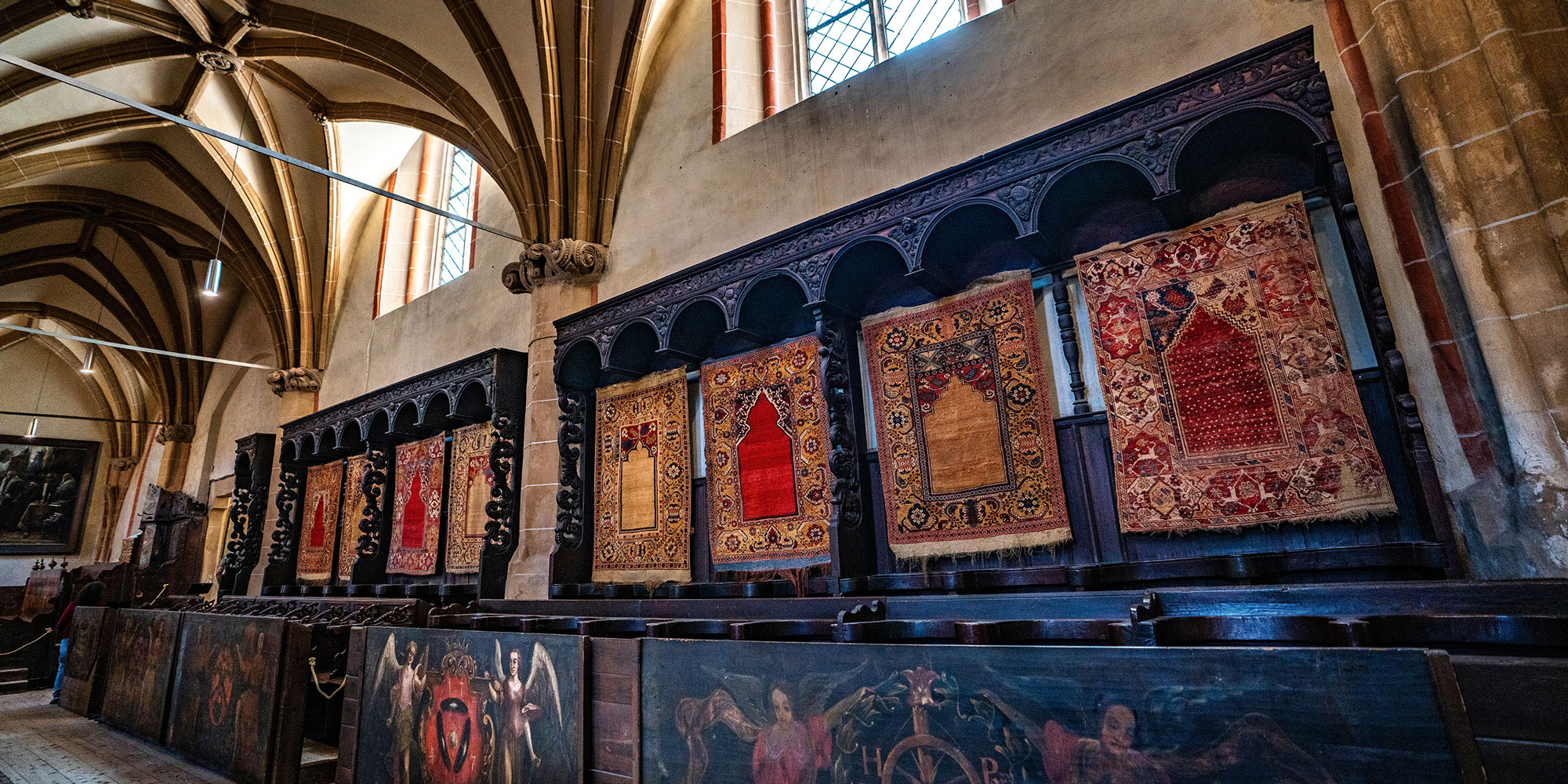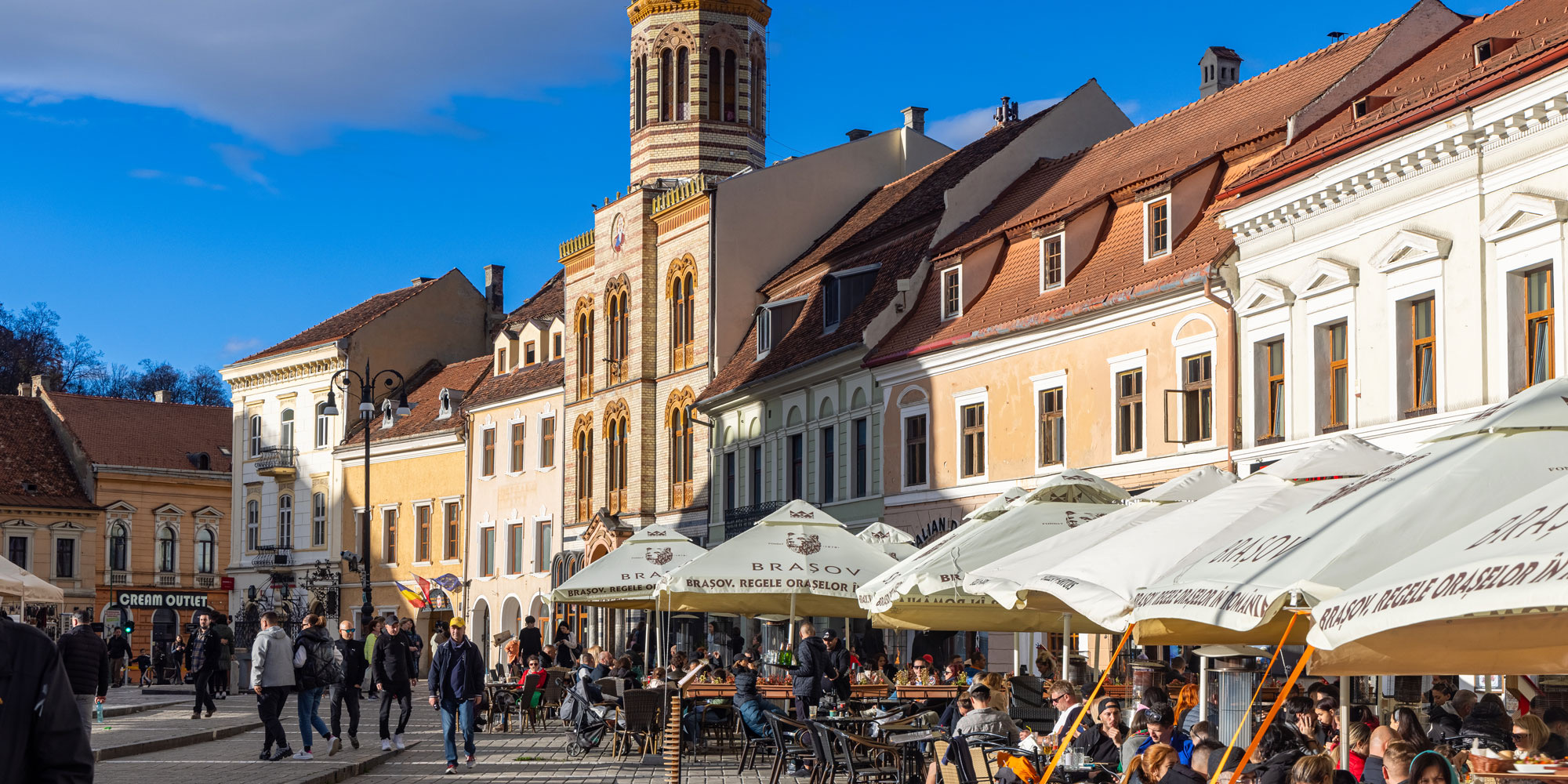
Get a year of super-useful advice
Who to book with, how to get the best deals plus inspiring destination ideas from the experts, for only £36.75 for the year – that’s 25% off.
Join Which? TravelOffer ends 8th January 2026

If you’re in the market for ironies – and Romanians, with a sense of humour darkened by their history, generally are – here’s one from Brasov-Ghimbav Airport.
Transylvania’s newest gateway opened two years ago. Authorities hope it will launch one of their prettiest towns and the wider region into Europe’s tourism brochure.
So what keepsake, what last-minute memento is sold in the Departures giftshop? Dracula. Not just one Dracula, either, but a veritable crypt full of them: Bela Lugosi Draculas with bloody fangs on bottle openers; silhouetted Draculas in full moons on fridge magnets; pink-caped cartoon Draculas on key rings.
Romanians quietly despair of this sort of thing. Since 1918, they’ve united disparate regions into a country, overthrown Nicolae Ceaușescu’s Communism in 1989 and, in 2007, entered the European Union without fuss. Yet Transylvania is best known for a fiction by an Irishman who never set foot in Romania (Bram Stoker) about a creature who never existed.
And here’s another irony. The real Transylvania brims with magic, just not the black variety. In Between the Woods and the Water, Patrick Leigh Fermor calls Transylvania ‘the very essence…of remote, leafy, half-mythical strangeness’. King Charles III sees it as a quasi-utopia – his first trip as king was to go walking there. Romania means ‘land beyond the forest’ in Latin. But since the launch of a new Wizz Air flight in late May, the land beyond has come closer for British holidaymakers.
This article first appeared in Which? Travel magazine. We don't accept freebies from travel companies, airlines, or hotels, so you can be sure that our investigations, recommendations, and reviews are completely unbiased.

Who to book with, how to get the best deals plus inspiring destination ideas from the experts, for only £36.75 for the year – that’s 25% off.
Join Which? TravelOffer ends 8th January 2026

I arrive into Brasov old town on a sultry evening. On Piata Sfatului, the main square, couples amble hand in hand and families chat on benches among Baroque townhouses. A balloon-seller is engulfed in a swaying cloud of Peppa Pigs and dolphins to the delight of a toddler. In backstreets, restaurant tables spill out from the homes of 18th-century merchants. The sky blushes pink, pastel facades ripen and Brasov blurs into romantic soft-focus.
For me, it’s love at first stroll. It’s only once you’ve finished swooning that you notice something else. There’s no thump-thump of music and no bellowing stag groups despite £3 pints. Rather Brasov hums with gentle civility. Its soundtrack is conversation and laughter. You never really get used to the beauty, Andra Oprescu tells me the next morning. I find her in the main square about to lead a walking tour of the old town. ‘I see something new every day and I live here,’ she says.
That morning, it was a 17th-century alley, which had appeared as if by magic. ‘In Brasov, you’re among 15th, 16th, 17th-century buildings built when people cared about beauty, even for gutters. Who cares about gutters today?’ When I mention Dracula, she gives an exasperated sigh: ‘I don’t know whether to laugh or cry.’
What you’re seeing in Brasov’s walled old town is a Saxon settlement. From 1211, Hungarian kings lured Saxon settlers from the Low Countries with promises of land and mercantile freedom in return for support against Tartar invaders. Brasov flourished as a merchant hub between the Austro- Hungarian and Ottoman empires.
The Black Church – the name derives from walls scorched by fire in 1689 – will look familiar if you’ve visited a Germanic hall church. It has a soaring nave (it’s the largest Gothic church between Vienna and Istanbul). Walls are plain except for ribs painted a delicate duck-egg blue with a central pulpit to uphold Lutheran primacy of the word. What’s unusual are the Ottoman rugs. They’re draped over balconies and carved pews – donations from merchant guilds.
It now stands as one of the world’s largest collections. I sit in a pew among 300-year-old woven flowers as a rehearsing orchestra fills the church with Bach. It’s the perfect expression of Brasov – beauty and culture where the Occident meets the Orient.
If all of this comes as a surprise, blame marketing. In Cosmin Velican’s craftshop, The Locals, offers ‘colours and flavours from locals’. Its shelves are crammed with painted egg cups and plates, and its walls covered with photos of grinning craftsfolk. Cosmin muses that Dracula is only peddled for overseas tourism.
‘People come to Brasov because it’s an authentic experience. We need to be prouder of that authenticity’, he says. ‘Bran Castle is a properly beautiful castle, but the way things are done there is horrible.’

Ah yes, Bran Castle. Drive 30 minutes west of Brasov – through light industrial units and Communist apartments in regimented rows out to plains, which lap against the Carpathian Mountains – and you’ll find Dracula’s Castle.
It isn’t, obviously. Bram Stoker provided no locations, just overwrought descriptions of a castle among the Carpathians. No matter. One million visitors arrived in 2023, making Bran Castle Romania’s premier sight. Surely a million people can’t be wrong?
Before the fiction, let’s establish facts. The 15th-century ruler of Transylvania, Vlad II, used the nickname Dracul as a knight of the chivalric Order of the Dragon (Dracul). His son, Vlad Tepes, occasionally flourished Draculea (son of Dracul), although you’ll know him better as Vlad the Impaler.
Combine the two, spice with Victorian Gothic melodrama and you’ll cook up a blockbuster. To be fair, Bran Castle looks the part. In a kink in a gorge, it rises sheer from a knuckle of rock: slab sides, roofline bristling with turrets and towers. The menace decreases somewhat among stalls peddling vampire T-shirts (‘Romania: fangs for the memory’) and plastic medieval tankards. I’m tempted by a gloriously lurid painting of the castle beneath a full-moon clock. Disappointingly, there are no fake vampire teeth.
I buy a ticket and latch on to a coach tour group. Its Romanian guide explains how Bran Castle was founded by Teutonic knights in the 13th century, how it allowed Hungarian kings to control a key trade route, then became a retreat for Queen Marie, the last queen of Romania, who masterminded the country’s enlargement in 1918.
The group stares at its feet. This isn’t what they’re here for. The guide sends us inside: ‘I’ll meet you in two hours. Don’t get bitten by vampires. I hope you’ve brought garlic.’ Really? I ask. Vampires after so much genuine history? He shrugs: ‘It’s what people come for’.
First the good news. They’ve clearly thrown money at the restoration. Interiors are tidy and the galleried courtyard is in better nick than when it was in use. Within, a warren of creaky staircases leads to Queen Marie’s furnished bedroom or the music room where she played piano duets. Now the bad news. A medieval castle really isn’t designed for mass tourism. By 10am, the rooms are choked, with long queues on staircases. Twice I’m pushed aside as someone takes a photo. By the time we reach the attic, the movement through corridors is glacial.
I finally get to see what’s of such interest – a diorama on werewolves. Ahead, electric candlelight shimmers in a garret. I shuffle inside with the throng to see – oh god, no – a ghoulish figure propped upside down in a coffin. Frankly, I couldn’t wait to leave Bran Castle.

To decompress, I drive to Pestera village in the Carpathian foothills. Cosmin had recommended it. What’s there? Nice walks in the mountains which sawtooth behind, apparently, otherwise not much. Hay spills from lofts of shingle-clad farmhouses. A family eats lunch in the shade as chickens scratch and a horse dozes beneath an apple tree. A man in a straw hat slowly scythes a field. When I park the car, there’s silence except for grasshoppers in wildflower meadows. I couldn’t have been happier after Bran Castle. And it strikes me that if the soul of Transylvania lies anywhere, it may be in places like this.
King Charles thinks so. On his first visit to Transylvania in 1998, he was ‘totally overwhelmed by [its] unique beauty and extraordinary rich heritage’. (A fun fact: Queen Marie was Queen Victoria’s granddaughter, thus Charles’s great-great aunt, making the king a distant relative of Vlad Tepes.)
More than 20 trips since, he has come to understand its exceptional biodiversity and sustainable farming as a salve for our age. When Saxon villages in the Transylvanian highlands an hour north of Brasov suffered depopulation, the then-prince funded traditional communities and bought a house in the village of Viscri.
I spot the village from two miles away – a fairytale of white towers and turrets among bosky hills that look unusual for reasons I can’t quite put my finger on. This is Viscri’s fortified church. It’s Unesco-listed, which is the last thing you expect in a settlement of 450 people. Up close, it’s rather like Bran Castle: walls wagon-circled around a medieval church, bastions covered in tiles like dragon scales. Pews inside have paintings of birds soaring over towers and trees.
I ascend up the tower, a last redoubt with metre-thick walls, to see a shepherd with his flock on a distant hill. Suddenly, I get why the landscape looked unusual – there are no hedgerows or fences. No boundaries at all. It’s a vision of countryside from centuries ago.
Viscri seems in a similar temporal back eddy. Cobbles and dirt road replace asphalt. Geese honk in a stream beside the lane and horses drink at a trough carved from a log. Shuttered farmhouses have pretty lace curtains, barn-sized doors, sometimes plaques naming their 19th-century builder – Micheal Weiss here, Georg Guttner there. Walls are painted delicate washy aquas, yellows and greens. It’s like walking through a watercolour of a bygone village.
Virginia, the owner of my guesthouse, tells me she quit a 20-year career as a TV journalist in Bucharest to return to her family homestead. ‘It’s a quiet life,’ she explains, ‘although I’ve met more important people in Viscri than I ever did in my job.’ Like who? ‘The prime minister of Romania and your king.’
She tells me tourism income helps sustain the community. Most people visit the church and King Charles’s farmhouse at number 163, which has exhibitions in its barn, then leave. I’m sure they have a lovely time, but they’re missing out. After dinner, I sit on a bench. With daytrippers gone, the village reinvents itself. A gaggle of local children lark in the stream, old women in headscarves yarn on benches, and a farmer and his wife rumble past in a horse-drawn wooden cart. When a herd of cows sway slowly up the lane, the children break off to steer them towards a barn. They needn’t have bothered. The cows know the deal, as they’ve clearly done this before.
On this warm, peaceful evening, Viscri appears that rare thing – a snapshot of authentic tradition. I’m not saying that you should ignore Transylvania’s other sights. But its fascination, if you seek it, is in places like Viscri. With a map, you could lose a happy week in the Transylvanian highlands alone: exploring Saxon villages such as Viscri and Biertan, discovering more than 150 fortified churches and taking walks in meadows.
And I bet if you did, you’d see a Transylvania more memorable than any horror story.
Wizz Air flies from Luton to Brasov-Ghimbav up to five times a week in peak season or three to four times a week off-peak.
Car rentals operate bureaux at the airport, but some desks shut at 9pm and current schedules see flights land at 8.30pm. Airport buses to Brasov stop at 7pm, so taxis may be the only option. Bolt and Uber drivers wait nearby, or there’s a taxi rank at the rear of the car park.
Fares are unmetered, so expect to pay around RON120 (approximately £120).
Autumn offers pleasant temperatures, lower prices and fewer crowds, making it the ideal time to visit Transylvania.
From late December, there’s enough snow for husky sledding, and plenty of atmospheric wintertime events — just make sure to wrap up warm, as temperatures can fall below freezing point, especially at night.
How often do you get to stay in the private retreat of King Charles III? It’s as traditional as you’d expect, with Transylvanian antiques and wood-burning stoves in some rooms. But there’s no wi-fi. See it as a destination in its own right, where managers offer horse riding or cart rides. Book half-board, as this is the only dinner option locally.
Book it via the Zalán Transylvania Castle website.